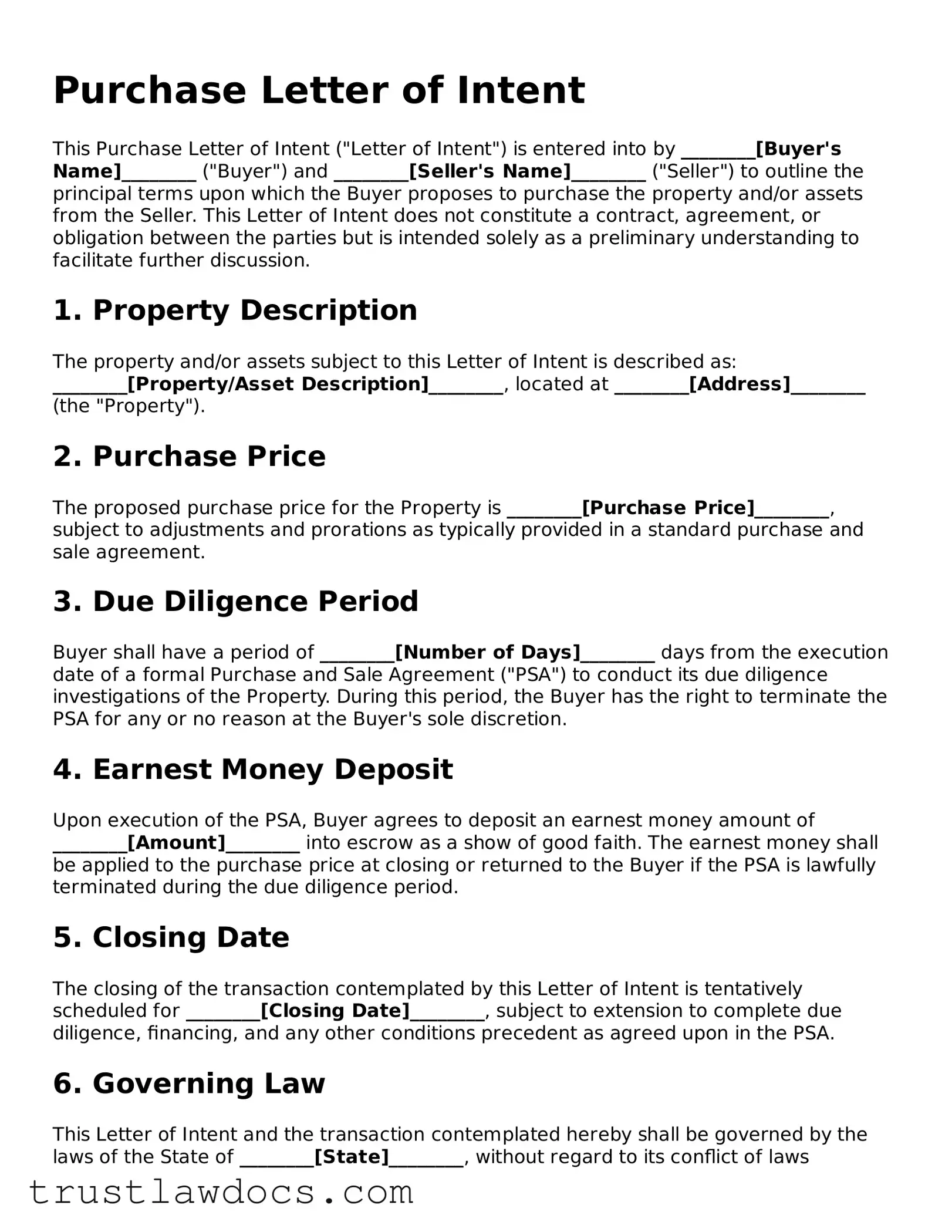Purchase Letter of Intent
This Purchase Letter of Intent ("Letter of Intent") is entered into by ________[Buyer's Name]________ ("Buyer") and ________[Seller's Name]________ ("Seller") to outline the principal terms upon which the Buyer proposes to purchase the property and/or assets from the Seller. This Letter of Intent does not constitute a contract, agreement, or obligation between the parties but is intended solely as a preliminary understanding to facilitate further discussion.
1. Property Description
The property and/or assets subject to this Letter of Intent is described as: ________[Property/Asset Description]________, located at ________[Address]________ (the "Property").
2. Purchase Price
The proposed purchase price for the Property is ________[Purchase Price]________, subject to adjustments and prorations as typically provided in a standard purchase and sale agreement.
3. Due Diligence Period
Buyer shall have a period of ________[Number of Days]________ days from the execution date of a formal Purchase and Sale Agreement ("PSA") to conduct its due diligence investigations of the Property. During this period, the Buyer has the right to terminate the PSA for any or no reason at the Buyer's sole discretion.
4. Earnest Money Deposit
Upon execution of the PSA, Buyer agrees to deposit an earnest money amount of ________[Amount]________ into escrow as a show of good faith. The earnest money shall be applied to the purchase price at closing or returned to the Buyer if the PSA is lawfully terminated during the due diligence period.
5. Closing Date
The closing of the transaction contemplated by this Letter of Intent is tentatively scheduled for ________[Closing Date]________, subject to extension to complete due diligence, financing, and any other conditions precedent as agreed upon in the PSA.
6. Governing Law
This Letter of Intent and the transaction contemplated hereby shall be governed by the laws of the State of ________[State]________, without regard to its conflict of laws principles.
7. Confidentiality
Both parties agree to keep the terms of this Letter of Intent and all related negotiations confidential, except as required by law and to the extent necessary to facilitate the contemplated transaction.
8. Binding Effect
This Letter of Intent shall be binding upon the parties hereto and their respective heirs, executors, administrators, and assigns. However, it is understood that this Letter of Intent does not constitute a binding agreement to purchase or sell the Property until a formal PSA is entered into by both parties.
9. Acknowledgment
By their signatures below, the parties acknowledge that they have read, understood, and agree to the terms of this Letter of Intent as of ________[Date]________.
Buyer: ___________________________________ Date: __________
Seller: ___________________________________ Date: __________
